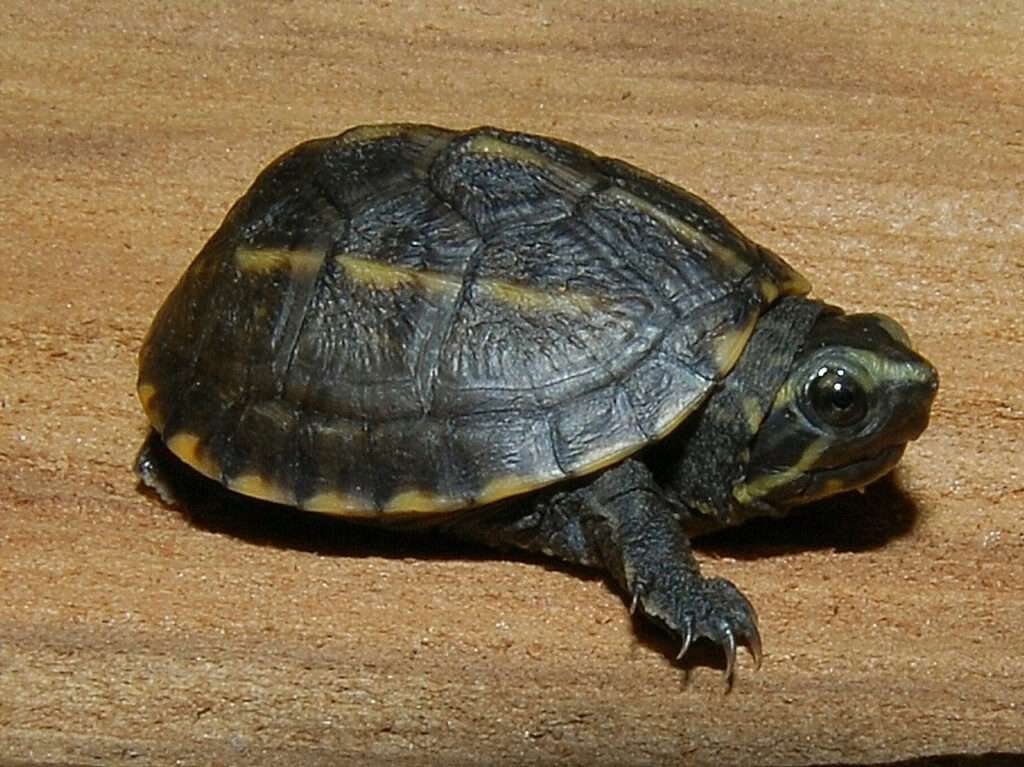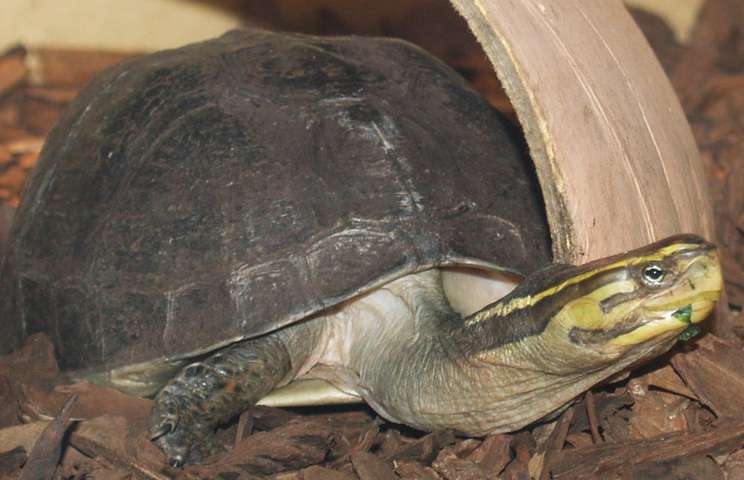
The three light-colored stripes that can be seen on the dark-brown shells of this little species of mud turtles make them easy to spot. Between their eyes and nose, Striped Mud turtles have additional yellowish stripes. They can be found all over the Southeast of America.
While most other Mud turtles spend more time basking in the sun, Striped Mud turtles spend more time feeding on land. They favour soft ground in shallow, slowly moving waters. These omnivorous turtles primarily eat mollusks, worms, invertebrates, fish, and occasionally plants and algae.
Care as a Pet

Housing
Striped Mud Turtles tend to reside in shallow rivers with sluggish currents, soft bottoms, and an abundance of aquatic vegetation, just like the Common Musk Turtle. The turtle’s natural habitat is in the southeast of the United States, where it may be found in states with a continental climate including Georgia, Florida, North and South Carolina, as well as Virginia. These turtles hardly ever spend time in the sun since they prefer to stay submerged. When on land, they frequently excavate burrows and search among trash and cow dung for nourishment. The fact that some Striped Mud Turtles can go up to a month without making surface contact is interesting. They can stay completely submerged in shallow lakes that are beginning to dry out throughout the summer. Striped Mud turtles have been found to prefer quiet or slowly moving bodies of water despite coming from diverse geographical areas and having distinct lifestyles. They can be found in brackish, salty, and freshwater environments. Their preferred habitats include marshes, mud or sand beds, and wet fields in waters with a salinity under 15 parts per thousand. They also prefer marshes with cypress trees and wet meadows.
Heat
For adults, you should maintain the water temperature at 71 to 75 degrees Fahrenheit, and for hatchlings, aim for the 80s. This can be accomplished by using an immersion heater and monitoring the thermometer.
Maintain a temperature range of high 80s to low 90s Fahrenheit in the location where they will be tanning. They should be able to thoroughly dry off under a UVB lamp in their basking area, which should be located away from the water. You don’t want the temperature in your turtle’s environment to drop below 70 degrees, as we just discussed in the temperature section. This indicates that you need a heat source in addition to UVB light.
Feed
In their natural habitat, they are primarily opportunistic omnivores with a considerable preference for protein. When kept in captivity, you can feed them small pesticide-free grasshoppers, crickets, earthworms, baby fish, feeder fish, bloodworms, krill, snails, and small shrimp or crayfish. Aside from commercial turtle pellets based on vegetation like these from Zoo Med, you should occasionally give your turtle some nutritious greens like Romaine lettuce, water hyacinth, duckweed, and other leafy greens. When fed a fresh, protein-rich meal in their native habitat, they will cheerfully consume it. Don’t forget to give them calcium and vitamin D3 supplements if they are inside. It will be necessary to take vitamin D3 if UVB lighting is not available.
Table





